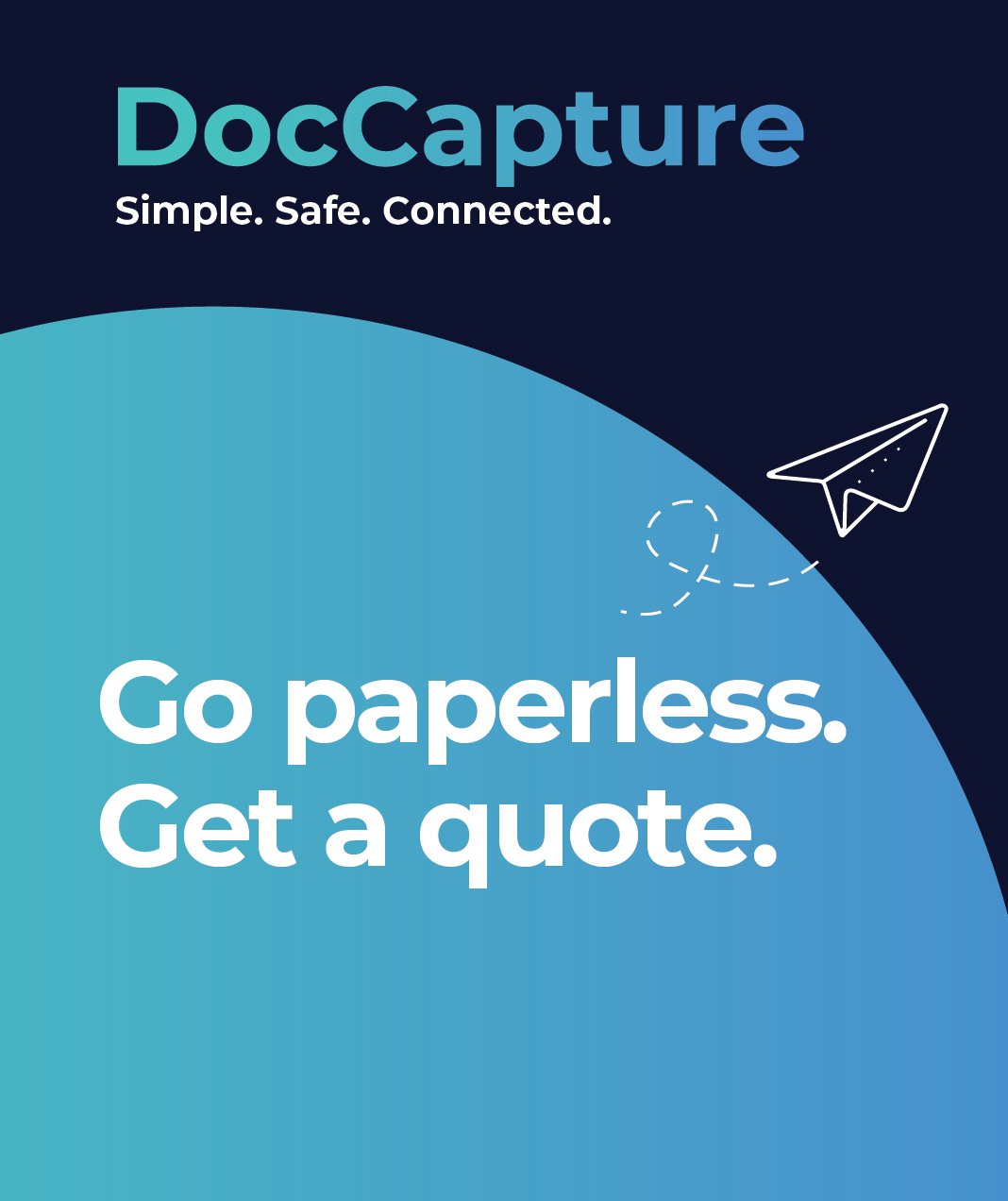The Environmental Impact: The Green Benefits of HR Document Scanning
Table of contents
Sustainability is no longer a buzzword—it’s a business imperative. As environmental concerns take center stage, HR leaders are increasingly being called upon to help their organizations meet corporate sustainability goals. Enter green HR practices: strategies that reduce the environmental footprint of human resources operations while boosting efficiency, compliance, and employee satisfaction.
For many HR departments, the shift to green practices begins with how documents are managed. While digital document management might seem like just another step in tech adoption, it actually plays a central role in corporate sustainability strategies. From slashing paper waste to minimizing energy use and storage needs, going digital is a smart, measurable way for HR teams to contribute to environmental goals—without compromising on compliance or budget.
In this article, we’ll explore how transitioning away from paper-heavy workflows can help HR departments become leaner, greener, and more aligned with the future of work.
The Environmental Impact of Traditional HR Paper Processes
Despite the rise of digital tools, many HR departments still rely heavily on paper. Whether it's onboarding documents, performance reviews, benefits forms, or compliance records, the sheer volume of paperwork handled by HR is staggering. But this reliance on physical documents comes at a significant environmental cost.
Quantifying the Waste
A typical mid-sized company can generate thousands of pages of HR documents each year. Multiply that by the number of employees and processes, and the paper trail becomes enormous. According to estimates, the average office worker uses 10,000 sheets of paper annually, much of which ends up in landfills. For HR departments managing sensitive information, disposal and storage practices often exacerbate waste through excessive printing and retention.
For a more detailed look at document retention requirements, check out our 2023 Guide to HR Document Retention Requirements.
The Lifecycle Footprint of Paper
It's not just the paper itself that's problematic—the entire lifecycle of traditional HR documents has an environmental impact:
-
Printing consumes ink, toner, and electricity.
-
Shipping paper files (for audits or off-site storage) adds to carbon emissions.
-
Storing documents in filing cabinets or warehouse facilities requires energy for lighting, heating, and cooling.
When multiplied across the scope of HR operations, these practices result in a sizable carbon footprint. They also divert valuable time and resources away from strategic priorities.
For insight into the risks and inefficiencies of traditional systems, see Scanning HR Documents.
Benefits of Going Paperless in HR
Transitioning to a digital document management system isn’t just good for the planet—it’s also a win for HR operations. By reducing reliance on physical paperwork, HR teams can unlock efficiency, savings, and sustainability benefits all at once.
Reduced Paper Waste and Carbon Footprint
Digitizing HR files eliminates the need for printing, shipping, and disposing of large volumes of paper. This not only reduces office waste but also cuts the emissions associated with paper production and logistics. Every scanned and digitally stored document is one less burden on landfills and forests.
To see how going paperless can elevate your HR operations, visit HR Document Scanning.
Less Need for Physical Storage Space
Off-site storage facilities, file cabinets, and bulky archives can consume valuable office space and operational budget. A digital system replaces those physical assets with secure, easily searchable files stored in the cloud or on internal servers. This not only lowers environmental impact but also improves accessibility and compliance.
Explore how digital record keeping transforms HR workflows in our blog on Digital Record Keeping for Human Resources.
Energy Savings from Digital Workflows
Digital workflows significantly reduce the need for energy-consuming hardware like copiers, printers, and fax machines. In turn, this minimizes electricity use and contributes to a more energy-efficient workplace. Combined with automated processes, digital systems streamline routine tasks and reduce the administrative burden.
For a broader look at HR’s digital evolution, check out Digital Transformation in HR.
How Digital Document Management Aligns with Corporate Sustainability Goals
As sustainability becomes a key pillar of corporate strategy, HR departments are uniquely positioned to contribute in meaningful ways. Digital document management not only streamlines internal processes—it also supports broader Environmental, Social, and Governance (ESG) commitments.
Supporting ESG Reporting and Transparency
Organizations are increasingly expected to report on their environmental impact. ESG disclosures often require data on resource use, waste reduction, and operational efficiencies—all areas where digital HR systems can provide measurable improvements. By moving away from paper, HR departments generate less waste and consume fewer resources, helping to document progress toward sustainability benchmarks.
This shift is not just about optics; it's a strategic move that resonates with investors, employees, and regulators alike. To learn how HR teams are embracing digital systems to support ESG efforts, see HR Digital Revolution: Embracing ECM Software.
Enabling Enterprise-Wide Green Initiatives
Sustainability isn’t a siloed initiative—it’s an organizational effort. HR plays a central role in aligning people, policies, and practices with sustainability goals. By adopting green HR practices such as digital file management, HR sets a precedent for other departments, encouraging a culture of environmental responsibility.
For instance, when HR eliminates paper from onboarding or compliance processes, it signals a larger shift toward efficiency and innovation. This change can ripple outward, influencing procurement, IT, and operations to follow suit.
Discover how digital HR practices fit into broader transformations in It’s Time for HR Teams to Embrace Digital Transformation.
Overcoming Barriers to Going Green in HR
While the benefits of digital document management are clear, HR leaders often face valid concerns when considering a shift from paper-based systems. From budget limitations to fears about compliance or disruption, these barriers can slow progress. Fortunately, solutions exist that make the transition smoother—and smarter.
Addressing Integration and Training Challenges
One common concern is how a new digital system will integrate with existing HR platforms and whether staff will require extensive training. The good news is that modern document management systems, especially those supported by experienced providers like DocCapture, are designed for compatibility and ease of use.
Solutions can be tailored to integrate with your current HRIS or ECM software, minimizing disruption and maximizing adoption. DocCapture provides hands-on support to ensure a smooth transition and empower your team to work more efficiently from day one.
Learn how scanning fits into today’s HR tech stack in The Role of Scanning in Modern Human Resource Management.
Managing Upfront Costs
Budget-conscious HR leaders often hesitate at the perceived costs of going paperless. However, digital transformation in HR isn’t just an expense—it’s a long-term investment. By reducing paper usage, cutting storage costs, and improving productivity, the ROI becomes evident quickly.
DocCapture specializes in cost-effective scanning and digital solutions for HR departments, helping organizations transition efficiently without compromising compliance or security.
For an in-depth look at the cost-benefit analysis, visit Document Scanning Services for HR Departments.
Ensuring Compliance and Security
Sensitive HR records require strict confidentiality and compliance with data retention laws. Many HR professionals worry that digitizing files might increase exposure to risk. In reality, the opposite is true.
Digital document management systems offer encrypted storage, audit trails, and controlled access—far more secure than paper files in an unlocked cabinet. With partners like DocCapture, compliance is built into the system architecture, making it easier to meet retention policies and protect employee data.
For those looking to become leaders in the field, see How to Become an HR Rockstar by Going Paperless.
Conclusion
Sustainability isn’t a distant goal—it’s a present-day imperative. For HR leaders, embracing green practices can start with a simple but powerful shift: moving from paper to digital document management. It’s a change that supports corporate ESG goals, enhances compliance, reduces costs, and empowers your team to work more efficiently.
DocCapture is here to help. With proven expertise in secure, compliant document scanning for HR departments, we make it easy to go paperless without disrupting your operations. Our tailored solutions are designed with your specific needs in mind—whether it’s reducing storage overhead, improving audit readiness, or simply boosting day-to-day productivity.
Ready to take the first step toward a more sustainable HR future?
Explore our specialized HR Document Scanning services and discover how digital transformation can help you achieve your green goals.
👉 Fill out our Get a Quote form to connect with our team and start your journey toward greener HR operations today.
Share this
You May Also Like
These Related Stories

Human Resources Documentation: Are You Keeping the Right Records?

Future-Proofing HR Departments: The Need for Digital Resilience

